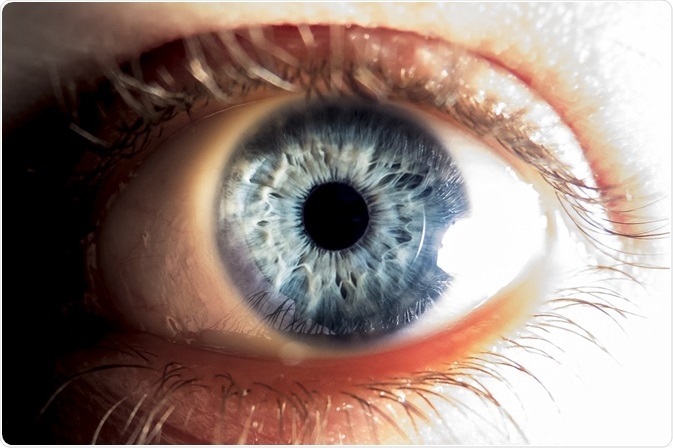The eye has three structures that work together to protect it, namely, the , eyelids and lacrimal apparatus.
The conjunctiva is a transparent mucous membrane that covers the front of the eye. While a person is awake, the eye is constantly exposed to microbes. The skin is known to be home to many of the microbes found in the eye microbiota such as streptococci and coryneforms. However, not all skin microbes are also found in the eye, suggesting that only certain ones are selected for and present within the conjunctiva microbiota.

Credit: Vic29/ Shutterstock.com
The microbiota that reside on the conjunctiva is mainly made up of the following:
- Diptheroids
- Hemophilus-like Gram-negative bacilli
- Non-hemolytic streptococci
- Staphylococci
- Neisseria
Other microbes found on the conjunctiva that are part of the normal microbiota include:
- Staphylococcus aureus
- Peptococcus sp
- Clostridium sp
- Peptostreptococcus sp
- Cephalosporium sp
- Fusarium sp
- Propionibacterium sp
The conjunctiva is constantly exposed to the external environment and therefore vulnerable to contamination with microbes. The extent of invasion by fungi, Gram-negative rods and pathogenic bacteria is controlled by the immune system and the lacrimal apparatus. The lacrimal apparatus of the eye removes the majority of these microbes, meaning the microbiota that remains is of a comparatively low density and only made up of a limited amount of species.
Humans tend to blink about 12 times per minute, on average, which protects the eye from microbial contamination by providing a “tear film” over the eye’s surface. Tears contain lysozymes, beta-lysine, immunoglobulin G (IgG) and lactoferrin, and bacteria are killed by the synergistic actions of these substances.
The antimicrobial properties of tears are reflected in the fact that patients with Bell’s palsy, for example, who have lost the ability to blink and remove microorganisms from the cornea, often develop bacterial conjunctivitis. Tears also act mechanically, removing the majority of invading microbes from the conjunctiva through the lacrimal ducts.
The conjunctiva is also lined with lymphocytes, dendritic cells, neutrophils and plasma cells that rapidly respond to infection by generating antibodies, which provides a highly effective barrier to microbial invasion. It is very difficult for microbes to penetrate tissue deeper within the eye, unless this defence system has been disrupted in some way.
If trauma occurs and this barrier is penetrated, the deeper ocular tissue becomes susceptible to blood-borne infections such as tuberculosis and herpes, which causes inflammation of the eye’s middle layer or choroid.
How the eye microbiota might confer protection against pathogens remains unclear, but it is known that resident streptococci and coryneforms, for example, produce toxins called bacteriocins that inhibit the growth of similar bacterial strains, therefore making the environment unsuitable for potentially pathogenic microbes.
Further Reading